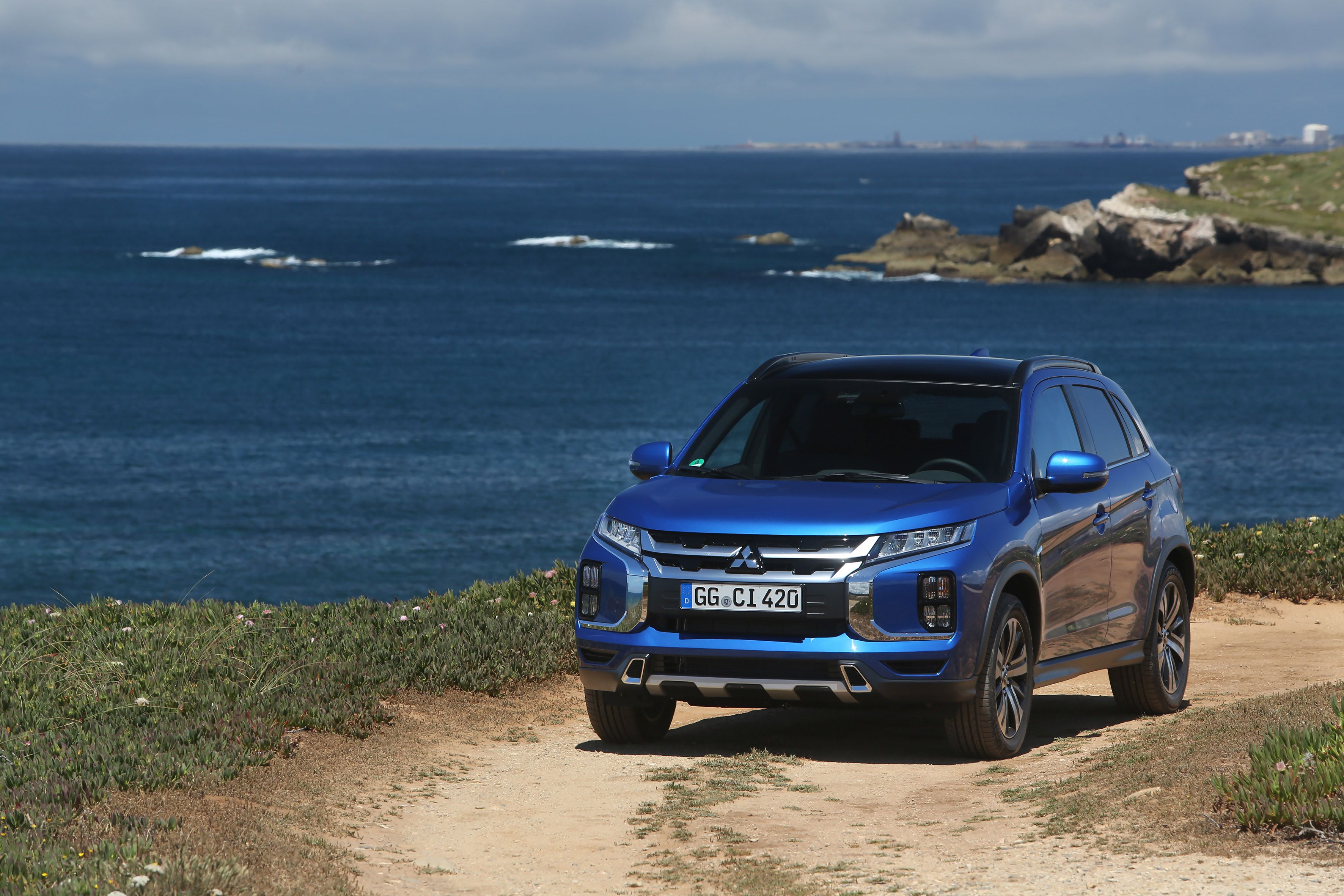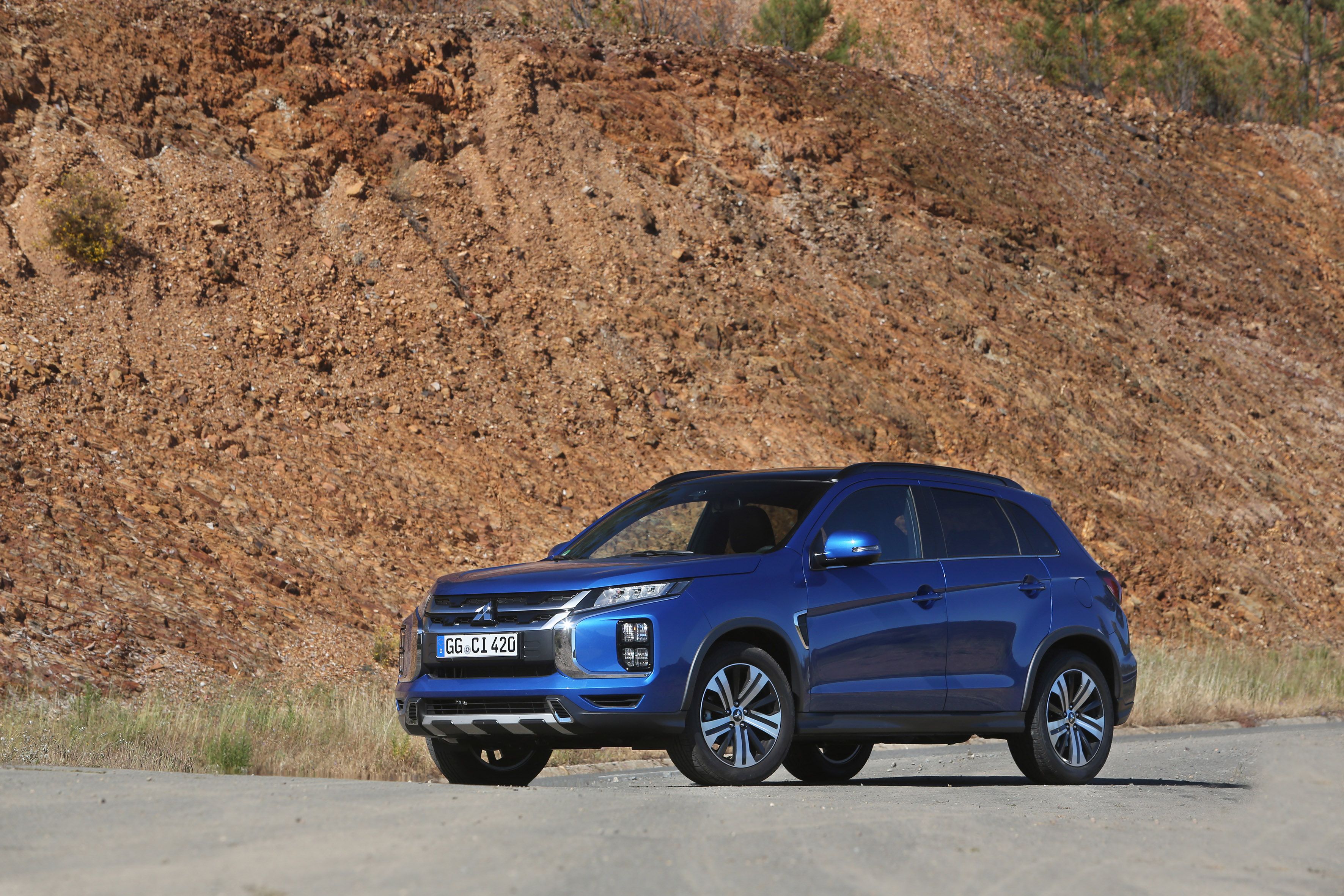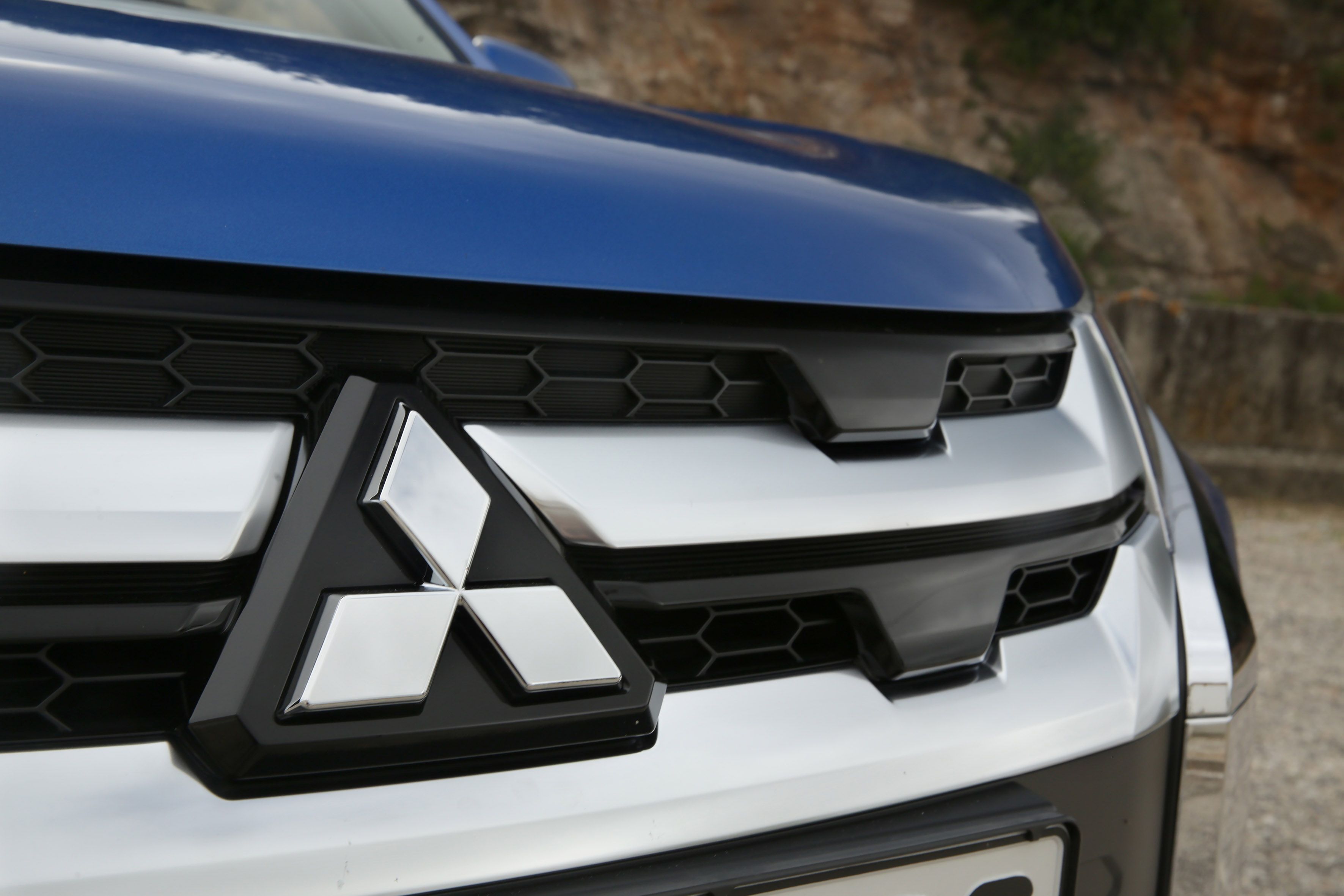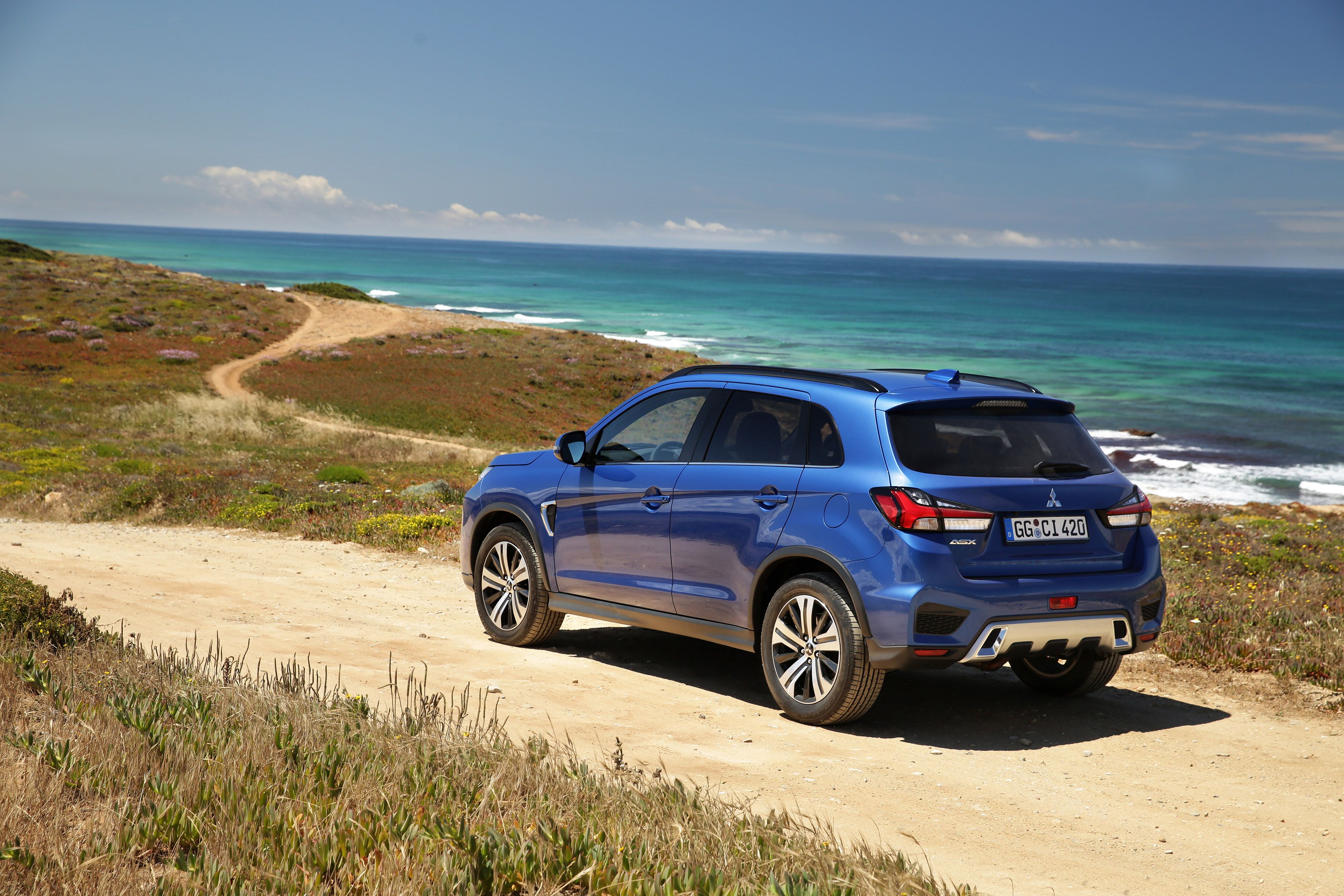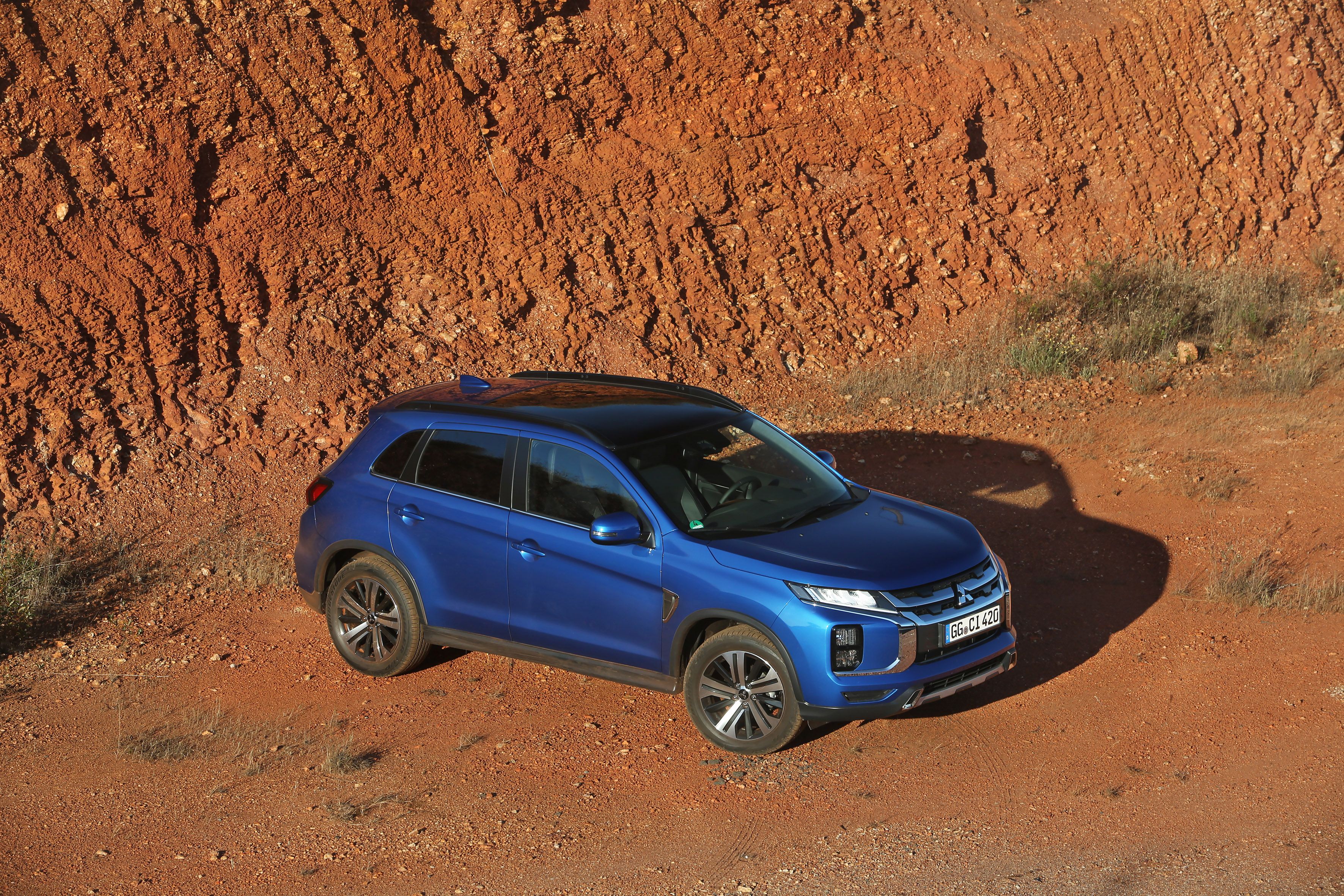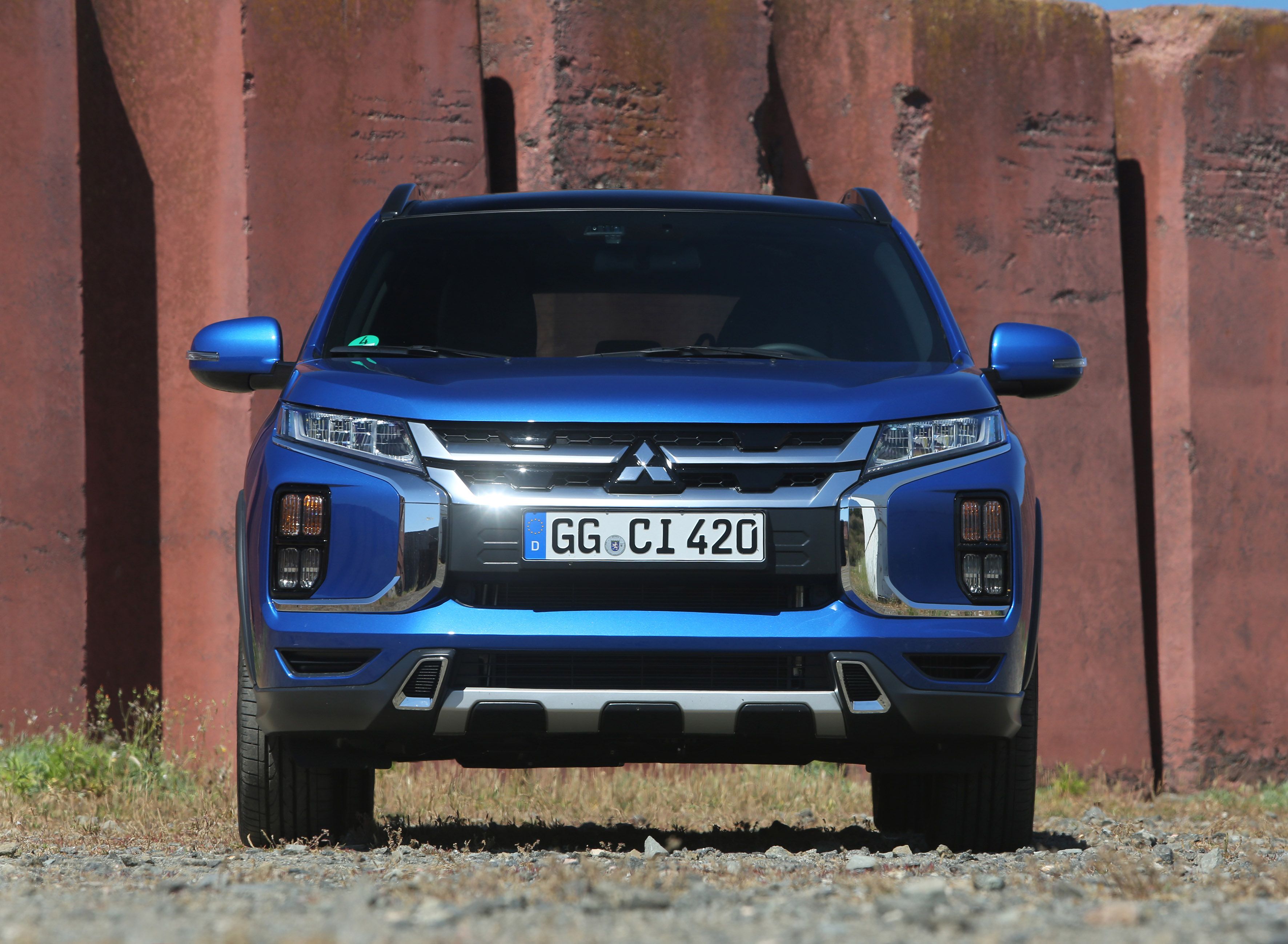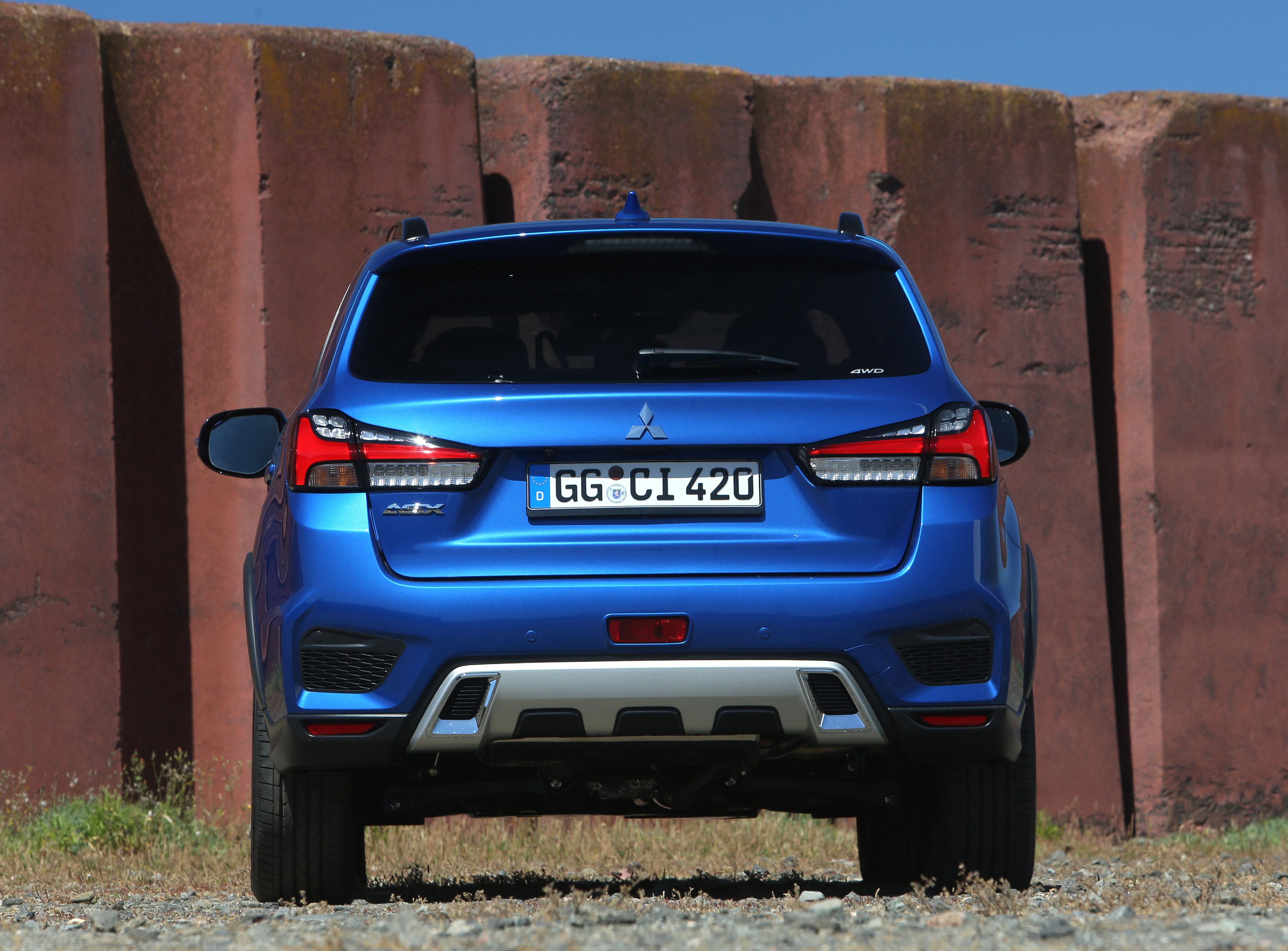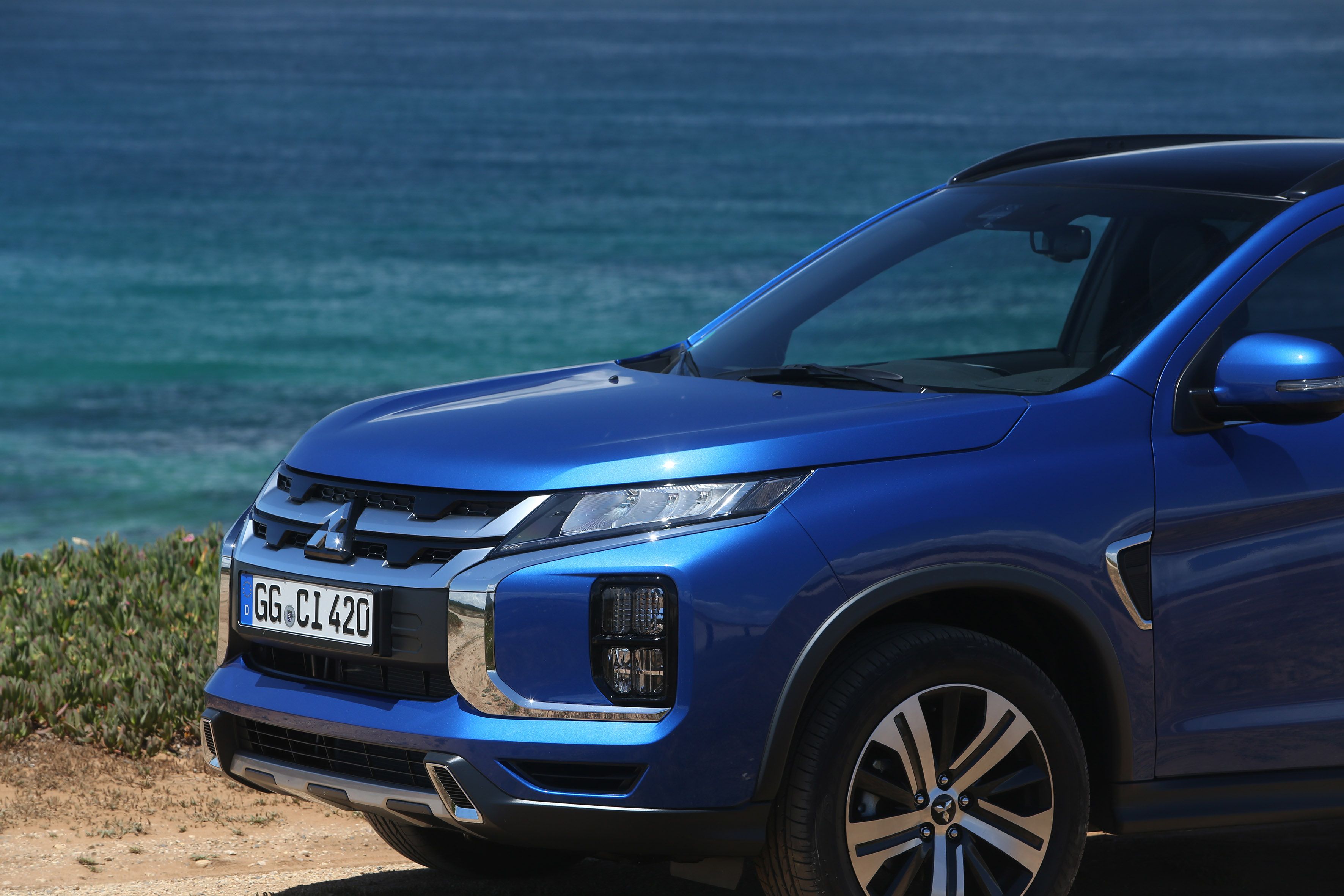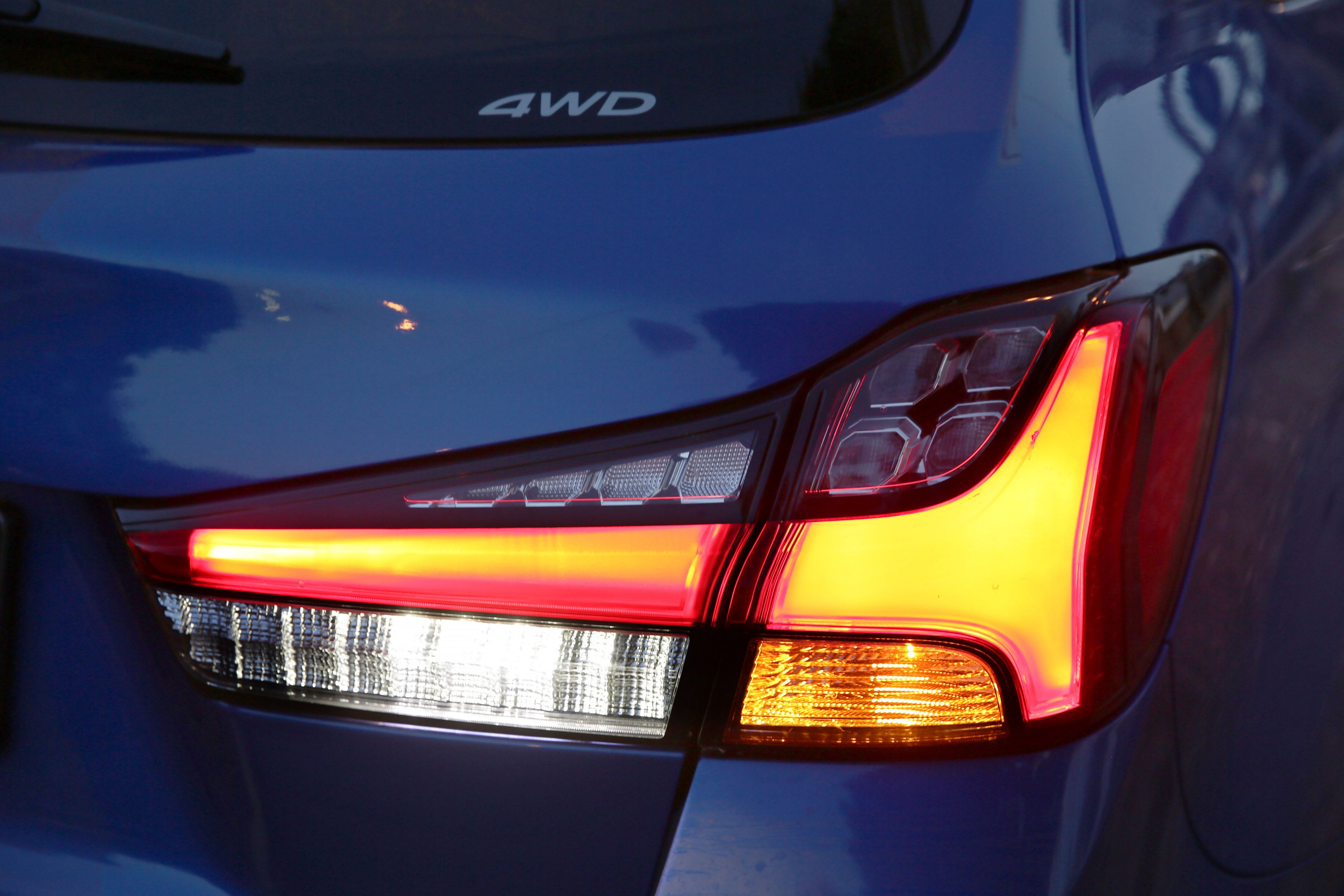The current-generation Mitsubishi ASX keeps on chugging along. First introduced in 2010, Mitsubishi’s never-say-die crossover is back for another go at a segment that, on the surface, has passed it by a long time ago. But give credit to Mitsubishi. As dated as the ASX is — it received a facelift in 2015 — Mitsubishi believes that it can still print money, and as long as that’s the case, who are we to argue? And so, the 2020 ASX has arrived with another extensive facelift that, at the very least, gives the crossover a fighting chance at staying relevant in a market that has become increasingly competitive in recent years. It’s not just about staying relevant, though. Mitsubishi needs the 2020 ASX to hold the fort until the automaker launches its wave of new models under the Nissan-Renault banner. Can the 10-year old ASX do it? It better.
2020 Mitsubishi ASX
- Make: Array
- Model: 2020 Mitsubishi ASX
- Engine/Motor: inline-4
- Horsepower: 148
- Torque: 144
- Transmission: 5-speed manual
- [do not use] Vehicle Model: Array
Exterior
For a model that’s 10 years old, the Mitsubishi ASX looks surprisingly fresh, at least as far as the front section of the crossover is concerned. Mitsubishi deserves a lot of credit for adopting its “Dynamic Shield” design language on the ASX. Other automakers run the risk of making its entire lineup look identical, but Mitsubishi doesn’t have that problem, in part because it’s not as visible as it once was in the market. It can skirt aesthetic convention the way other automakers can’t.
We see that on full display in the front section of the ASX where everything forward of the A-pillar is completely brand new. That includes the headlamp design and the more imposing front grille with the large Mitsubishi crest in the middle. The 2020 ASX also benefits from a new LED setup on the cheeks of the section. It’s a lot bigger than the one on the previous ASX and the stacked look helps establish a level of masculinity that its predecessor lacked completely.
The underbody cladding doesn’t protrude on it anymore as it did in the previous iteration of the ASX. The cladding is still there, though, minding its own business at the bottom of the bumper. I’ll admit that it’s a nice look to the ASX. It doesn’t jump off the page but given that this model is 10 years old, you take anything that resembles something “new” out of it. This design is “new” for the ASX and Mitsubishi should count this as a victory in it of itself.
Unfortunately, it’s hard to say the same thing about the ASX’s side and rear profiles. The side remains virtually unchanged, which isn’t really so much of a bad thing as it is an irrelevant thing. I was hoping for a few changes in the use of character lines to reshape the crossover’s body, but there’s nothing noticeably different there. Even the crossover’s length — 4,365 mm (171.8 inches) — remains the same. The only solace in this area of the ASX is how the changes in the front section spill into the side. At the very least, you can tell see — and notice — the new headlamps and the chunky intakes.
There are some noticeable changes, too, particularly in the rear bumper where the underbody cladding occupies more space than it probably should. This has functional benefits, sure, but visually, it looks like an eyesore. The shape of the taillamps remains largely the same and props to Mitsubishi for using new LEDs there, too. But the redesigned bumper with the fake intakes on opposite ends is too much. At the very least, they’re unnecessary. At worst, they have no business being there. It makes the 2020 ASX’s rear section look messy and cluttered.
Overall, Mitsubishi accomplished what it set out to do with the 2020 ASX’s exterior. The goal was to give it a fresh look without having to change the design of the crossover. Mitsubishi did a great job of that in the front and less so in the side and rear of the ASX. The result is a crossover that touts a new era of design while still keeping pieces of its old identity in place. It’s not something that I would do, but then again, there’s a reason I’m not an auto designer. Mitsubishi believes that the 2020 ASX will appeal to a new batch of buyers looking for a cheap crossover that looks like it's of this day and age. In some ways, it is. In other ways, it isn’t. I suppose it’s on us to take what we can get and run away with it.
Interior
Prepare to be disappointed if you’re expecting wholesale changes to the interior of the 2020 Mitsubishi ASX. While there are upgrades — the 8.0-inch infotainment system is a level-up from its predecessor — there aren’t that many of them to count in the grand scheme of things. I suppose setting your expectations low on the ASX’s interior is a good thing. There’s no expectation that you’re going to see anything that counts as splashy or luxurious. That should be the approach because the ASX’s interior remains simple and even sensibly arranged. A lot of the same components return in the 2020 model. The three rotary knobs that control the cabin’s temperature are still there in their proper place. The 2020 ASX also comes with the same instrument cluster and steering wheel. The door buttons are in there proper place, too. Outside of the larger infotainment screen, the only noticeable change is the gear shifter mechanism. Some of you might not even notice it, even if it’s not that big of a deal in the first place.
You can opt to jazz up the proceedings with a few chrome trims here and there, but you’ll have to spend a little extra on these visual updates. The seats are comfortable, somewhat surprisingly. They’re plushier than you’d expect, though they’re not as supportive as you’d like, especially if you’re taking corners at higher-than-usual speeds. Even if you struggle getting comfortable in the seats — a problem for tall folks — all versions of the ASX feature height-adjustable seats. Even better, the range-topping ASX Dynamic adds a little modernity to the equation with a four-way electrically adjustable driver’s seat. Legroom space is adequate in the front and especially in the rear where the raised front seats open up more space underneath for those long legs to stretch.
There’s not much of a rear screen at the back, but the good thing is that all versions of the 2020 ASX are equipped with rear-facing cameras as a standard feature. Cargo volume adds up to 14.4 cubic feet when all the seats are up and 42 cubic feet when the split-folding rear seats are flat. Those are decent numbers for a crossover of the ASX’s size. Some rivals like the Toyota C-HR have more space available — 19 cubic feet — when the rear seats are up and less space — 36.4 cubic feet — when the rear seats are flat on the floor. Other rivals offer the opposite. The Mazda CX-3 has less cargo space — 12.4 cubic feet — than the ASX when the seats are up but more space — 44.5 cubic feet — when the rear seats are folded. The point is that the 2020 ASX isn’t at a disadvantage here. Besides, the ASX offers an extra 1.05 cubic feet of space in the underfloor storage area. That’s big enough to fit a piece of small luggage or two.
The tech side of things is where Mitsubishi usually falls flat. Happily, that’s not the case with the 2020 ASX.
Opt for the range-topping ASX Dynamic and Mitsubishi will throw in a TomTom navigation bundle. The infotainment screen itself is surprisingly easy to use. It’s very responsive and the big icons on the screen reduce driver confusion, especially when he’s driving. Climate and cruise control also come standard in the crossover.
All told, the 2020 Mitsubishi ASX’s interior is what you’d expect out of it if you keep your expectations where they’re supposed to be. The quality is decent. Space is adequate. And the layout, while a bit too old, doesn’t deviate away from what has worked in the past.
Drivetrain
If you’re looking for a dent in the 2020 Mitsubishi ASX’s armor, all you need to do is pop the engine open. Inside sits a new 2.0-liter naturally aspirated four-cylinder engine that produces 148 horsepower and 144 pound-feet of torque. The figures are fine and in line with what you can expect from a crossover with some age on it. The more important question is this: could Mitsubishi have supplied a bigger, if not more modern, engine? A naturally aspired four-cylinder unit? It’s 2019, Mitsubishi.
Only then will you actually feel the ASX take command on the road. In standard form, the ASX’s four-cylinder engine works in concert with a five-speed manual transmission — really? — that sends power to the two front wheels. Off the bat, I’ll tell you to steer clear of this and turn your attention towards the six-speed CVT automatic transmission that sends power to all four wheels of the crossover.
This is where the ASX loses a lot of its appeal. The absence of a turbocharger is particularly disappointing because there’s no avenue to boost power at the lower end of the rev range. But more importantly, some of the ASX’s direct rivals — the Toyota C-HR, Mazda CX-3, and even the Seat Ateca and the Skoda Karoq — all feature turbocharged engines. They don’t have to worry about scrapping for power, specifically low in the rev range because the turbochargers are there to do their jobs. The ASX, on the other hand, doesn’t have that luxury.
I suppose there are some ways around it, but, unfortunately, these ways: aren’t available on the ASX. The engine itself can get obnoxiously loud on certain occasions, and while a manual transmission works well on a sports car, the same can’t be said on a modestly powered crossover that doesn’t have a turbocharger to rely on. The six-speed CVT transmission is the better option, though that’s only because there’s no other option available. Mitsubishi’s CVT transmissions are known for being clunkers and you get the feeling that the Japanese automaker didn’t do anything to change that narrative.
|
Engine |
2-liter, naturally aspirated, four cylinders |
|---|---|
|
Power |
148 horsepower |
|
Torque |
144 pound-feet |
|
0-62 mph (manual) |
10.2 seconds |
|
0-62 mph (automatic) |
12.2 seconds |
All of this translates to a crossover that could have turned out better if Mitsubishi didn’t cut any corners in this section. It’s an admittedly harsh thing to say, but would you have expected anything less from a model that’s well past its “best by” label? Performance numbers are decent, but they won’t blow you away, either. The front-wheel drive ASX with the five-speed manual can sprint from 0 to 62 mph in 10.2 seconds and has a top speed of 118 mph. Meanwhile, the four-wheel drive ASX with the six-speed CVT transmission can cover the same ground in 12.2 seconds. If there is a silver lining to the 2020 ASX’s power and performance numbers, it’s that they’re actually not that bad when you see them on paper. It’s achieving these results in the real world that’s problematic.
That’s not to say that the setup is terrible. It’s not. The front McPherson struts and the multilink rear setup do their jobs when the roads are smooth. It’s when the surface gets choppy that the ride becomes uneven, bordering on uncomfortable. The four-wheel-drive version offers three driving modes, giving you the opportunity to set up the ride based on your needs at any point in time. There are two 4WD modes, including a 4WD AUTO that’s supposed to maintain traction on less-than-stellar roads and a 4WD LOCK mode that sends more torque to the rear wheels to further improve traction on poor road surfaces. There’s also the option to revert to a 2WD setup if you’re driving in the city or the 'burbs. These options are good to have on the ASX, even if they don’t — or can’t — address the bigger issues surrounding the crossover’s overall handling and drivability.
Pricing
The 2020 Mitsubishi ASX goes on sale in September 2019 in the U.K. and other markets. Pricing details have yet to be announced, but we do know that Mitsubishi will offer three trim levels for the new crossover. The base model is the ASX Design 2WD with the manual transmission. The middle-tier model is the ASX Dynamic 2WD with the manual transmission. Then there’s the range-topping ASX Dynamic 4WD with the CVT transmission, which rounds out the 2020 Mitsubishi ASX lineup.
Since Mitsubishi has yet to announce pricing details, we can assume that the 2020 ASX will likely start at a little over £16,000 based on the pricing structure of last year’s model. The cost of owning a 2020 ASX could balloon to around £25,000 depending on the trim and options that are included in the crossover.
Most of you probably know this by now, but the 2020 ASX isn’t coming to the U.S. Whether that’s a good or bad thing, I’ll leave that up to all of you.
Competition
Toyota C-HR
This isn’t really a fair comparison because one model is head and shoulders better than the other. But since both the Toyota C-HR and the Mitsubishi ASX occupy the same segment, there’s still a comparison to be made, fair or otherwise. The C-HR arrived as an all-new model in 2017. Needless to say, it was developed for the modern times, right down to its edgy design and boisterous 2.0-liter turbocharged four-cylinder engine. The powertrain unit produces 144 horsepower and 139 pound-feet of torque. The ASX actually has the edge here. But the C-HR makes better use of its mechanical setup. It’s light on its feet and nimble on its wheels. It also boasts an extensive list of standard safety features that the ASX just doesn’t have. Sure, the C-HR isn’t a perfect car. The back seat is cramped and it has its own noisy engine. But compared to the ASX, the C-HR is the better option. Even better, it's actually available here in the U.S. with a starting price of only $20,945.
Mazda CX-3
The 2019 Mazda CX-3 is arguably one of the most well-rounded compact crossovers in the market. It’s a lot like the Toyota C-HR. It looks smooth and well thought out. It has a clean-looking interior that feels more premium than it actually is. And it’s powered by a 2.0-liter turbocharged four-cylinder engine that produces 148 horsepower and 146 pound-feet of torque. On the road, the CX-3 is a joy to drive. The combination of the four-cylinder engine and a six-speed automatic transmission provides crisp acceleration and smooth cruising on the road. It suffers from the same noisy engine syndrome as the Mitsubishi ASX and the C-HR, but it’s really par for the course for vehicles in this segment. Where the CX-3 falls short is in cabin space. It can get cramped inside and there’s not much cargo room in the back, either. Overall, though, the Mazda CX-3 is one of the safest bets when you’re in the market for a compact crossover. It certainly helps, too, that it’s appropriately priced at starting figure of $20,390.
Final Thoughts
You have to appreciate Mitsubishi’s effort in keeping the ASX alive even if the model is in bad need of a next-generation version. But here’s the thing: now that Mitsubishi is part of the Renault-Nissan Alliance, it’s unlikely that we’ll get to see a next-generation ASX. There’s a significant amount of change that Mitsubishi’s in line for in the coming years, and most of that change revolves around the Alliance’s electrification plans for the future. Now, there’s a chance that we’re going to see an all-electric compact crossover wearing the Mitsubishi badge, but it’s probably not going to have any connection to the current ASX. But before that time arrives, Mitsubishi will keep rolling out the ASX crossover. Part of thinks that it’s not fair for the ASX to keep on trudging on knowing that most of its rivals have clear and distinct advantages. But there’s a part of me that admires it, too. Age and all, the ASX is still fighting for its place in the compact crossover market. At the very least, that’s worth a tip of the cap.

